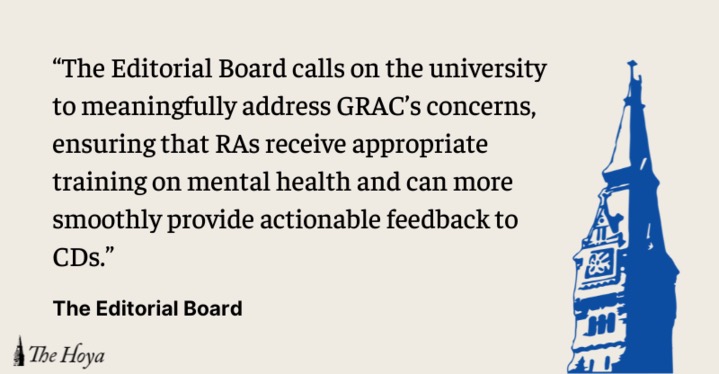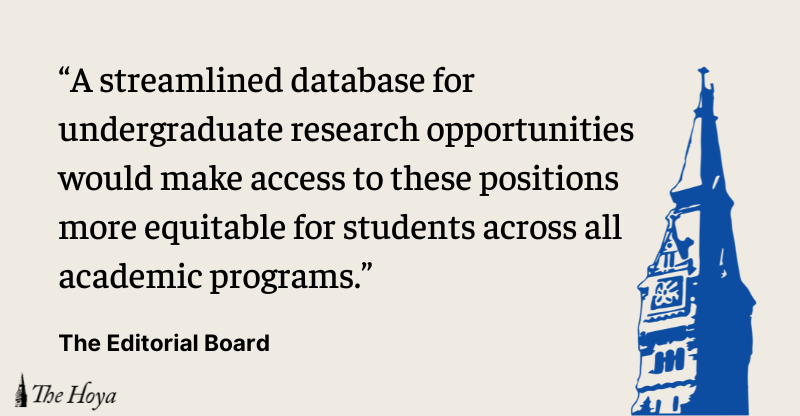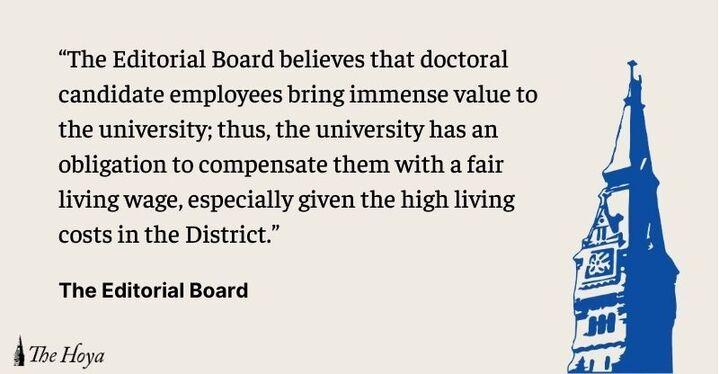D.C. has the potential to be a great college town — but for that to happen, Georgetown can’t isolate itself as a city on a hill.
In order to reap the benefits of our proximity to other universities, students should do more to take advantage of the resources offered by the Consortium of Universities of the Washington Metropolitan Area and clubs that promote intercollegiate cooperation.
Georgetown students rarely interact with peers studying in D.C. In fact, their attitudes toward other D.C. schools can be condescending. For example, we’ve all heard jabs about GWU’s being Georgetown’s waitlist. While it’s natural for proximity to breed competition, Georgetown students’ relationships with other universities lack the qualities that support a healthy, friendly rivalry.
In the case of other university rivalries, like Duke-UNC in basketball or BC-BU in hockey, games generate tangible anticipation and produce huge, raucous crowds. They’re an opportunity to build relationships and strengthen school spirit. Among Georgetown and D.C.’s other universities, however, no comparable rivalries exist. Instead, our attitude toward games against local institutions borders on indifference.
This apathy is a result of our limited interaction with our neighbors. Though Georgetown students can enroll in classes at other D.C. universities through the consortium, few take advantage of the opportunity. The program combines resources from 12 colleges and universities in the District, Maryland and Virginia, allowing universities to focus on their areas of specialized knowledge and students to take classes that might not be available on their own campus. As reported in The Hoya, (“Undergrad Representation Slim in Consortium Classes,” Oct. 15, 2012) students interested in beginner-level Swahili or American Sign Language can enroll at Howard or Gaulladet respectively, since neither language is offered at Georgetown. But our university has largely limited its promotion of the program to graduate students living off campus, and the administration is generally unwilling to allow undergraduates to participate unless a particular course has no similar counterpart on the Hilltop.
Though the consortium has done little to connect Georgetown students to their peers elsewhere in the city, clubs have acted as a more effective bridge. Some on-campus groups like Global Zero — a non-partisan nonprofit group dedicated to eliminating all nuclear weapons — and College Democrats are part of larger national organizations that have chapters at multiple D.C. universities. These chapters often coordinate in co-hosting or attending one another’s events. Similarly, D.C. Students Speak, an organization with the aim of representing students in District governance, regularly rotates the hosting of its events among different D.C. universities. Though these clubs have made inroads in fostering interaction, there is still room for greater cooperation among student groups.
By promoting the consortium to more undergraduates and strengthening cross-campus club partnerships, the university could help foster healthier relationships between student communities. We’re all studying here in the District — maybe we could learn something from each other.













